Bird behavior encompasses a wide range of fascinating and often puzzling actions. One such behavior is the one-leg stance commonly observed in seagulls and various other bird species. Many of such often amazed by the nature of the Seagull and think about why they do it.
This intriguing behavior has sparked curiosity among observers, prompting questions about its purpose and underlying mechanisms. In this article, we delve into the reasons behind this peculiar avian behavior.
So, make sure to check the article till the end so that you can understand the fact well. Don’t skip any part, otherwise, you might find it difficult to understand the whole thing. Let’s start the discussion.
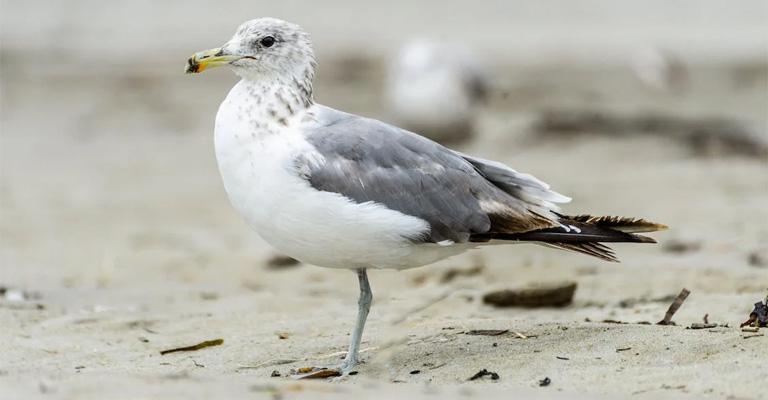
Resting Behavior of Seagulls
Usually, Seagull’s resting behavior is closely related to their nature of standing on just one leg. Here are some important facts that will definitely surprise you.
Importance of Conserving Energy During Rest
Energy conservation is crucial for birds, as they require substantial amounts of energy for various activities such as flying, hunting, and maintaining body temperature.
By minimizing energy expenditure during rest, birds can ensure that they have sufficient reserves for essential tasks. Conservation of energy also plays a role in survival, especially during periods of food scarcity or harsh environmental conditions.
The One-leg Stance
Seagulls are known for their distinct behavior of standing on one leg while resting. This behavior has captured the curiosity of bird enthusiasts and researchers alike.
Seagulls often perch on piers, rooftops, or other elevated surfaces, lifting one leg and tucking it up into their body feathers. The raised leg is alternated periodically to provide warmth and comfort.
Potential Reasons for One-leg Stance
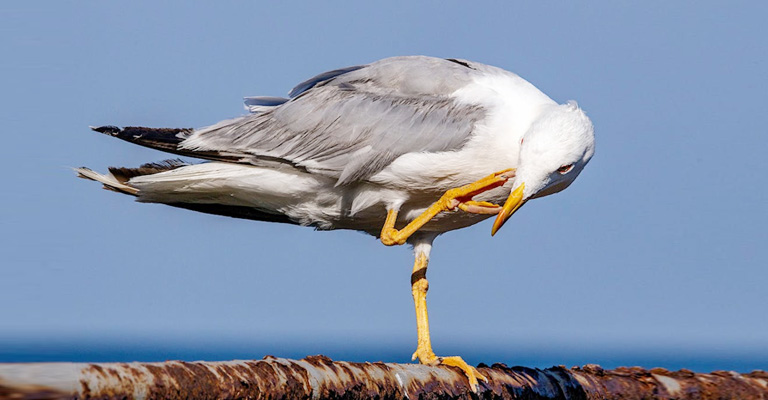
One proposed explanation for seagulls standing on one leg is the conservation of body heat. Birds lose a significant amount of heat through their legs, and tucking one leg up under their feathers can help reduce heat loss.
By raising one leg and keeping it warm, seagulls can conserve energy and maintain their body temperature more efficiently.
Other Factors Influencing Behavior
The behavior of standing on one leg may not be exclusive to seagulls and can be observed in other bird species as well.
Various biological factors might contribute to this behavior, such as anatomical adaptations or physiological mechanisms specific to seagulls.
Environmental factors, including weather conditions and habitat preferences, may also influence the leg positioning and resting behavior of seagulls.
Remaining Questions and Areas for Further Research
Although the one-leg stance in seagulls has been observed and theorized about, there are still unanswered questions regarding the specific reasons behind this behavior.
Further research is needed to explore the mechanisms and benefits associated with standing on one leg.
Studying the anatomical and physiological aspects of seagulls and conducting field observations under different conditions can shed more light on this intriguing behavior.
The One-leg Stance of Seagulls
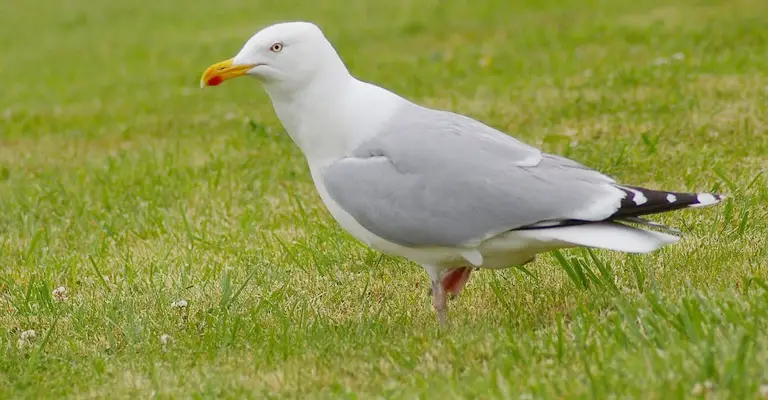
In the entire fact, there are a few surprising facts that you need to know. Let’s check them out.
Seagulls and Their Distinctive Behavior
Seagulls, commonly found in coastal areas around the world, are a type of seabird known for their adaptability and opportunistic feeding habits.
They have medium to large-sized bodies with long wings, enabling them to soar effortlessly over the ocean and along shorelines.
Seagulls typically have webbed feet, a characteristic that aids in swimming and walking on various surfaces. Their plumage can vary in coloration, often featuring shades of white, gray, and brown.
One of the most noticeable aspects of seagull behavior is their tendency to stand on one leg during rest periods.
When perched on a pier, rooftop, or other elevated surfaces, seagulls lift one leg and tuck it up into their body feathers, maintaining balance with the other leg.
This behavior is a common sight and has captured the curiosity of many observers.
Observations of Seagulls Standing on One Leg
The one-leg stance in seagulls is frequently observed during resting periods. While perched, seagulls will lift one leg and hold it close to their body, sometimes bending it at the knee.
This behavior is not limited to specific times of day or particular environmental conditions but can be seen in various contexts. Observers have noted that seagulls may alternate legs periodically, changing the leg they raise and tuck under their feathers.
Comparison With Other Bird Species Exhibiting Similar Behavior
Interestingly, the one-leg stance is not exclusive to seagulls. Similar behavior has been observed in other bird species as well. Flamingos, for example, are known to stand on one leg for extended periods, often with the other leg tucked up against their body.
This behavior is believed to be related to heat conservation and reducing energy expenditure. Some wading birds, such as herons and egrets, also exhibit one-leg resting behaviors, possibly for similar reasons.
While the one-leg stance is shared among different bird species, there may be variations in the exact mechanics and purposes of this behavior.
The specific anatomical adaptations and physiological mechanisms of seagulls, in comparison to other species, contribute to the understanding of the one-leg stance and its evolutionary significance.
Potential Reasons for One-leg Stance
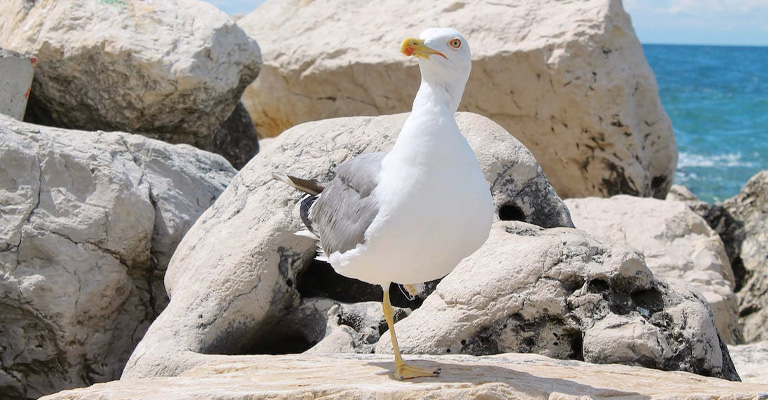
If you want to know about the common reasons behind Seagulls standing on one leg, I can answer you with a few potential reasons. Here you’ll find them in one place.
Conservation of Body Heat
Heat Loss through Bird Legs
Birds, unlike mammals, have a higher body temperature and possess specialized physiological adaptations to regulate their internal heat.
However, their legs, which are often exposed and less insulated compared to the rest of their bodies, can be susceptible to heat loss.
This makes the conservation of body heat a crucial consideration for birds, particularly in colder environments or during periods of reduced activity.
Theories on How Raising One Leg Helps Conserve Heat
The one-leg stance is thought to aid in the conservation of body heat in seagulls and other birds. One theory suggests that by lifting and tucking one leg into their plumage, birds reduce the surface area exposed to the external environment, minimizing heat loss through convection and conduction.
Additionally, raising a leg closer to the body’s core may allow for better retention of heat generated internally.
Energy Conservation
How Minimizing Leg Use Saves Energy
Resting behaviors that minimize energy expenditure are crucial for birds, as they need to conserve energy for essential activities such as foraging, reproduction, and migration.
By standing on one leg, seagulls reduce the overall muscular effort required to maintain balance, which in turn saves energy. The leg that is tucked up requires less muscle activity, allowing birds to rest and recover while conserving vital energy resources.
Possible Benefits in Terms of Survival and Foraging Efficiency
Conserving energy through the one-leg stance can provide several benefits for seagulls and other birds. By minimizing unnecessary leg use during rest, birds can reduce the risk of muscle fatigue and optimize their readiness for quick takeoffs and escapes from potential predators.
Furthermore, energy savings during resting periods enable birds to allocate more energy to foraging activities, improving their efficiency in locating food sources and increasing their chances of survival.
By considering the potential reasons behind the one-leg stance in seagulls, such as the conservation of body heat and energy, we can begin to unravel the adaptive significance of this behavior.
Understanding how birds optimize their energy expenditure and regulate body temperature provides valuable insights into their physiological adaptations and ecological strategies.
Further research is needed to validate these hypotheses and shed light on the intricacies of the one-leg stance in seagulls and other bird species.
Other Factors Influencing Behavior
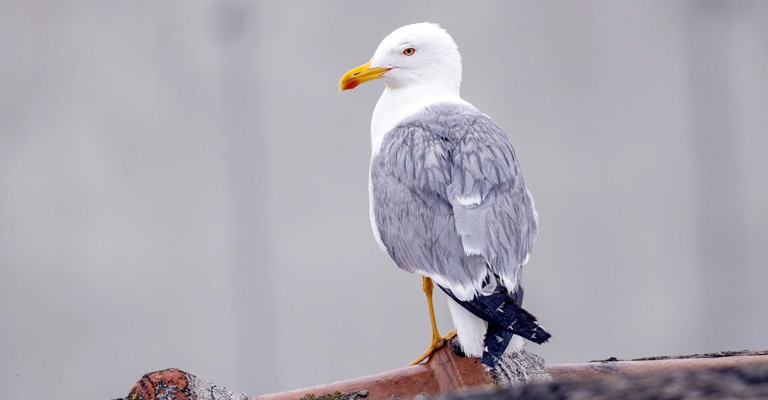
There are some other essential factors that are effective in this case too. Some of them are discussed below.
Biological Factors
Adaptations Specific to Seagulls
Seagulls are a diverse group of birds with unique adaptations that may influence their resting behaviors, including the one-leg stance.
Their long legs, for example, provide them with an advantage in wading through water and walking on various terrains.
These adaptations may have implications for their ability to balance on one leg and could contribute to their inclination toward this behavior.
Possible Anatomical or Physiological Reasons for the Behavior
Anatomical or physiological factors specific to seagulls may also contribute to their one-leg stance behavior. For instance, the distribution of muscle mass, bone structure, or tendon elasticity in their legs could make it more comfortable or energy-efficient for them to stand on one leg.
Further research into the anatomical and physiological characteristics of seagulls would help illuminate the underlying mechanisms driving this behavior.
Environmental Factors
Influence of Weather Conditions on Leg Positioning
Weather conditions can influence the leg positioning of seagulls during their resting periods. In colder temperatures, seagulls may raise one leg to minimize contact with the cold ground or reduce heat loss through their legs.
Conversely, in warmer weather, they may adopt different leg positions to regulate body temperature or dissipate excess heat.
Understanding the relationship between weather conditions and leg positioning provides insights into how seagulls adapt their resting behaviors to their surrounding environment.
Impact of Habitat and Perching Preferences
Seagulls inhabit various habitats, including coastal areas, lakes, and urban environments. The specific characteristics of their habitats and perching preferences may influence their choice to stand on one leg.
Factors such as the availability of suitable perching sites, stability of perches, or the need to adjust to different surfaces could contribute to the observed behavior.
Examining the correlation between habitat characteristics and leg positioning patterns can offer valuable insights into the behavioral ecology of seagulls.
Considering these biological and environmental factors expands our understanding of the complex interplay between the behavior of seagulls and their surroundings.
By exploring the adaptations, anatomical or physiological aspects, weather conditions, and habitat influences, we can gain a more comprehensive perspective on why seagulls exhibit the one-leg stance behavior.
Such knowledge contributes to our appreciation of the diverse factors shaping the behaviors of birds and their remarkable ability to adapt to various environments.
Factors Influencing Seagull’s One-leg Stance Behavior
| Factors | Description |
| Biological Factors | Adaptations specific to seagulls |
| Possible anatomical or physiological reasons for the behavior | |
| Environmental Factors | Influence of weather conditions on leg positioning |
| Impact of Habitat and perching preferences |
FAQs
Yes, several other bird species exhibit the one-leg stance behavior. These include herons, ducks, geese, hawks, and gulls. The behavior is observed in both long-legged and short-legged birds and is generally associated with resting.
Seagulls have a well-developed sense of balance and coordination, allowing them to maintain stability while standing on one leg. They adjust their body position and make small adjustments with their wings to keep their balance.
Additionally, their leg muscles provide sufficient strength to support their body weight on a single leg.
While the primary reasons for the one-leg stance behavior are energy conservation and heat retention, there may be additional benefits.
Some researchers suggest that standing on one leg may reduce muscle fatigue and strain, allowing the bird to be more alert and ready for quick takeoff if needed.
Additionally, the one-leg stance could help seagulls maintain their perching stability, especially in windy conditions.
Yes, seagulls are capable of standing on one leg for extended periods, particularly during resting periods. The specific duration may vary depending on various factors such as environmental conditions, individual stamina, and the bird’s need for rest.
However, it is not uncommon to observe seagulls maintaining the one-leg stance for several minutes or even longer.
While the one-leg stance behavior is commonly observed in seagulls, not all individuals or species may exhibit it consistently. Factors such as age, health, environmental conditions, and individual preferences can influence the frequency and duration of this behavior.
Some seagulls may choose to alternate legs periodically rather than consistently standing on one leg.
Wrapping Up
The one-leg stance behavior exhibited by seagulls and other bird species serves as an efficient strategy for conserving energy and maintaining body heat.
By raising one leg, birds minimize heat loss and reduce muscular exertion, providing potential advantages in terms of survival and foraging efficiency.
While other factors may influence this behavior, the primary motivations remain energy conservation and thermoregulation.
However, do you get the point that you were looking for? If not, please let us know extract;y what you are searching for. We’ll surely come back with the answer. Thank you for your time.